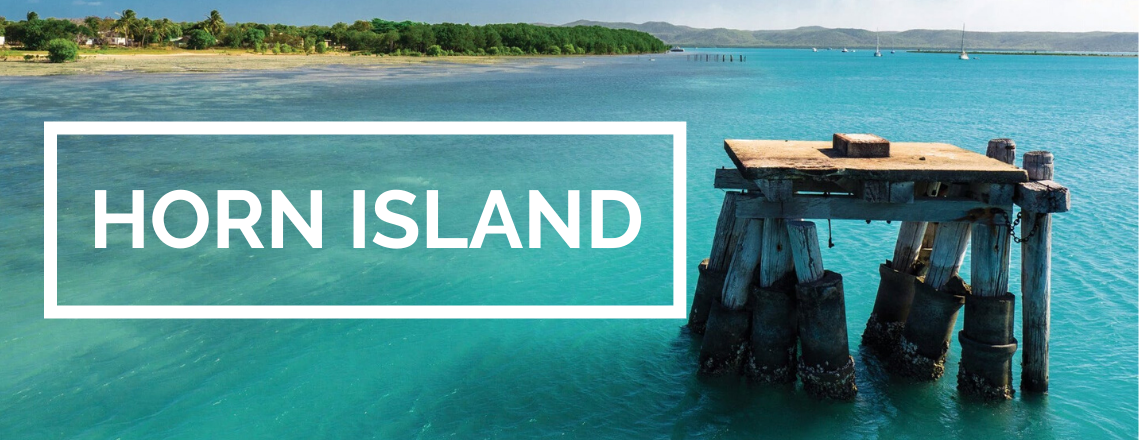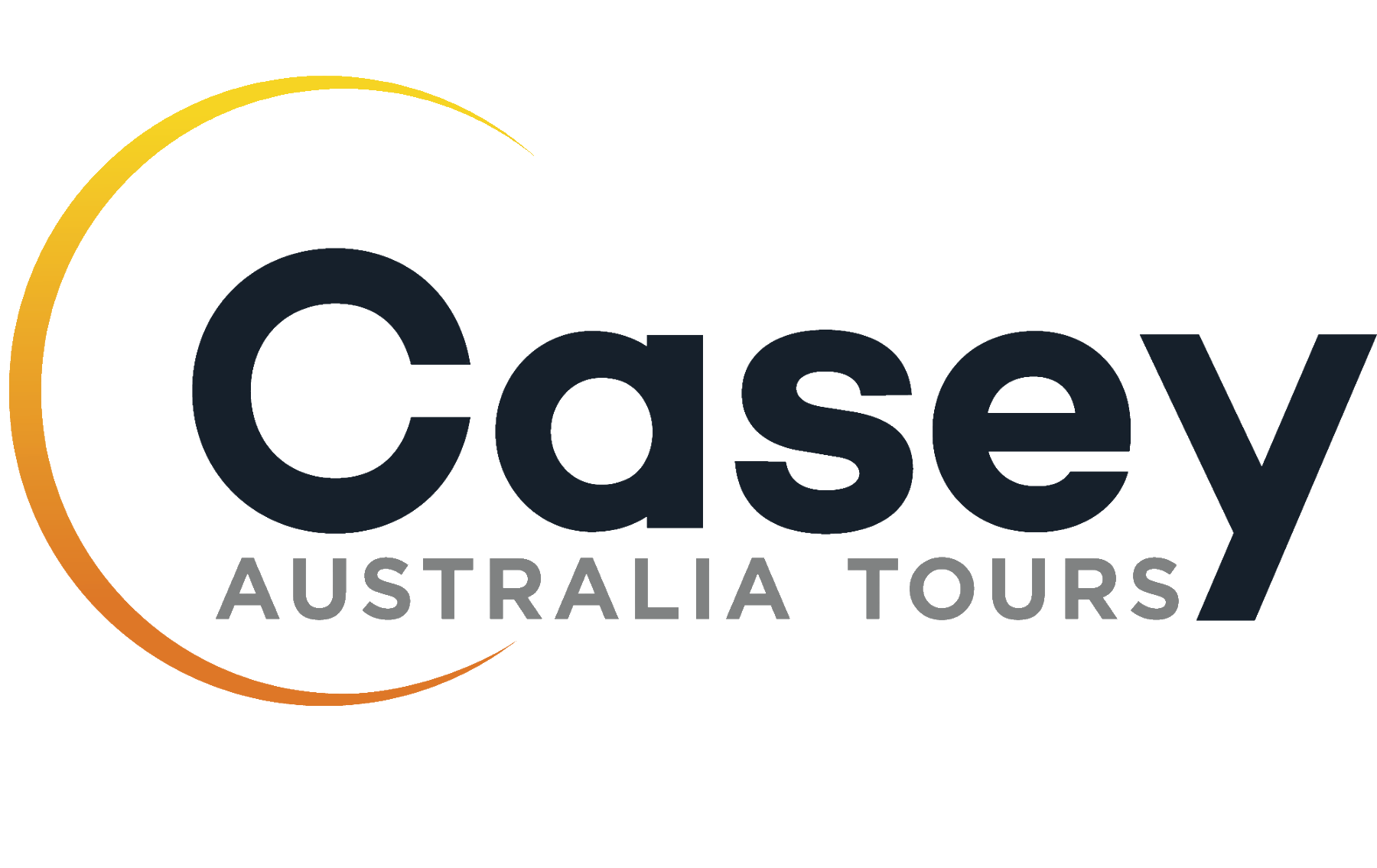

Ngarupai or Horn Island
Ngarupai, or Horn Island, is located approximately 17 kilometres of the Queensland Coast and just south of Papua New Guinea, in the southern or ‘Prince of Wales’ island group of Torres Strait. It is the traditional homelands of the Kaurareg People who for thousands of years followed traditional patterns of hunting, fishing and agriculture and offer a truly remarkable island experience.
The island was given its English name of Horn Island in October of 1803 when Captain Matthew Flinders in the schooner Cumberland travelled through Torres Strait. He observed that the largest island in the Prince of Wales group had a hill where two horns sat on the top. The name Horn Island is taken from Flinders’ observations of the ‘Horned Hill’ on the island.
European contact
In August 1864, a government settlement was established at Somerset at the tip of Cape York. The police magistrates of Somerset were hostile in their dealings with the local Aboriginal people of the Northern Peninsula Area and the Kaurareg. In April 1869, the crew of the cutter Sperwer were killed after the ship anchored off Prince of Wales Island. Government authorities determined that ‘the Korrorega natives’ were responsible for the killings. Three Kaurareg men were captured, found guilty of the Sperwer killings and executed by a party of Native Police led by Somerset police magistrate Henry Chester.
Frank Jardine, as Chester’s successor, led additional retaliatory attacks against the Kaurareg people on Prince of Wales Island (Murulug Island) during the 1870s. The remaining Kaurareg people were moved to Hammond Island in the first decade of the 20th century. The Kaurareg were forcibly removed from Hammond Island in 1922 by the government and resettled on the Island of Moa.
In 1872, the Queensland Government sought to extend its jurisdiction and requested the support of the British government. Letters Patent were issued by the British government in 1872, creating a new boundary for the colony which encompassed all islands within a 60 nautical mile radius of the coast of Queensland.
This boundary was further extended by the Queensland Coast Islands Act 1879 (Qld) and included the islands of Boigu, Erub, Mer and Saibai which lay beyond the previous 60 nautical mile limit. The new legislation enabled the Queensland Government to control and regulate bases for the beche-de-mer and pearling industries, which previously had operated outside its jurisdiction.
The government settlement at Somerset was officially closed in 1877 and transferred to Port Kennedy on Thursday Island. In 1884, the former Premier of Queensland, John Douglas, was appointed government resident magistrate of Thursday Island. Douglas opened Thursday Island to private settlement in 1885 and the island soon became the commercial centre of the Torres Strait, attracting thousands of immigrants from Asia, the South Pacific and Europe to work in the booming pearl industry.
Among the immigrants attracted to Torres Strait in the 1880s were Filipino divers and seamen. A small community of Filipino workers settled on Ngarupai around 1888. Pedro Galora was the first Filipino settler on Horn Island and he was soon joined by Raphael Louis Castro, Gregorio Leon Fabian (or Pavian), Pablo Remedio and Ramon Roas and their locally-born Indigenous wives. The Galora family received permission from the government to lease an area on Horn Island for grazing livestock. By 1895, the Filipino community on Ngarupai had grown to a population of around 150 people.
In 1894, gold was discovered on Horn Island by John Smyth and a mini gold rush on Horn Island followed this discovery. At the peak of the gold rush in 1896, 27 mines operated on Horn Island including a 30 feet deep, open cut mine. By 1907, the majority of mines on Horn Island had ceased operation. In 1988, the open cut gold mine at Ngarupai was re-opened, but closed after only 2 years.
After Japan’s declaration of war on Australia in 1941, all civilians were evacuated from Horn Island and work began on the construction of an air base by the Civil Construction Corps. The work completed at Horn Island included a large aerodrome with two airstrips, access roads, taxiways, bomb shelters, ammunition stores, gun emplacements, a jetty and a causeway.
An RAAF radar station operated from Horn Island between 1943 and 1945. On 14 March 1942, 8 Japanese planes bombed Horn Island destroying a RAAF Hudson bomber and a fuel dump. Horn Island was bombed 8 times by the Japanese during the war. The Horn Island airbase is used today as the main connecting airport to the Torres Strait region and is now owned and operated by the Torres Shire Council.
In the post-war period, the pearling industry declined across Torres Strait, and Islanders were permitted to work and settle on Thursday Island and the Australian mainland.
In 1946, a group of 10 Kaurareg men from Kubin, led by Elekiam Tom made the decision to move to Horn Island. They built houses and a church for their families in an area inland from the main wharf on the island, which came to be known as Wasaga village. The families at Wasaga village initially supported themselves by collecting firewood and selling it to the residents of Thursday Island.
By 1949, Wasaga village had its own church and school. While the Department of Native Affairs did not approve the establishment of the new settlement, the department was unsuccessful in its attempts to close it. The population of Wasaga village had grown to around 250 by 1965. In February 1969, the first Ngarupai Village Council was elected, with Samuel Wasaga serving as Chairman.
Travel to Horn Island with Casey Australia Tours and experience for yourself the stunning water on our 10 Day Accommodated Tour to Cape York and Thursday Island.
